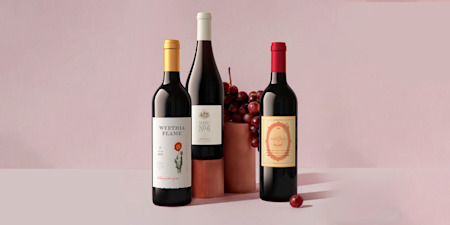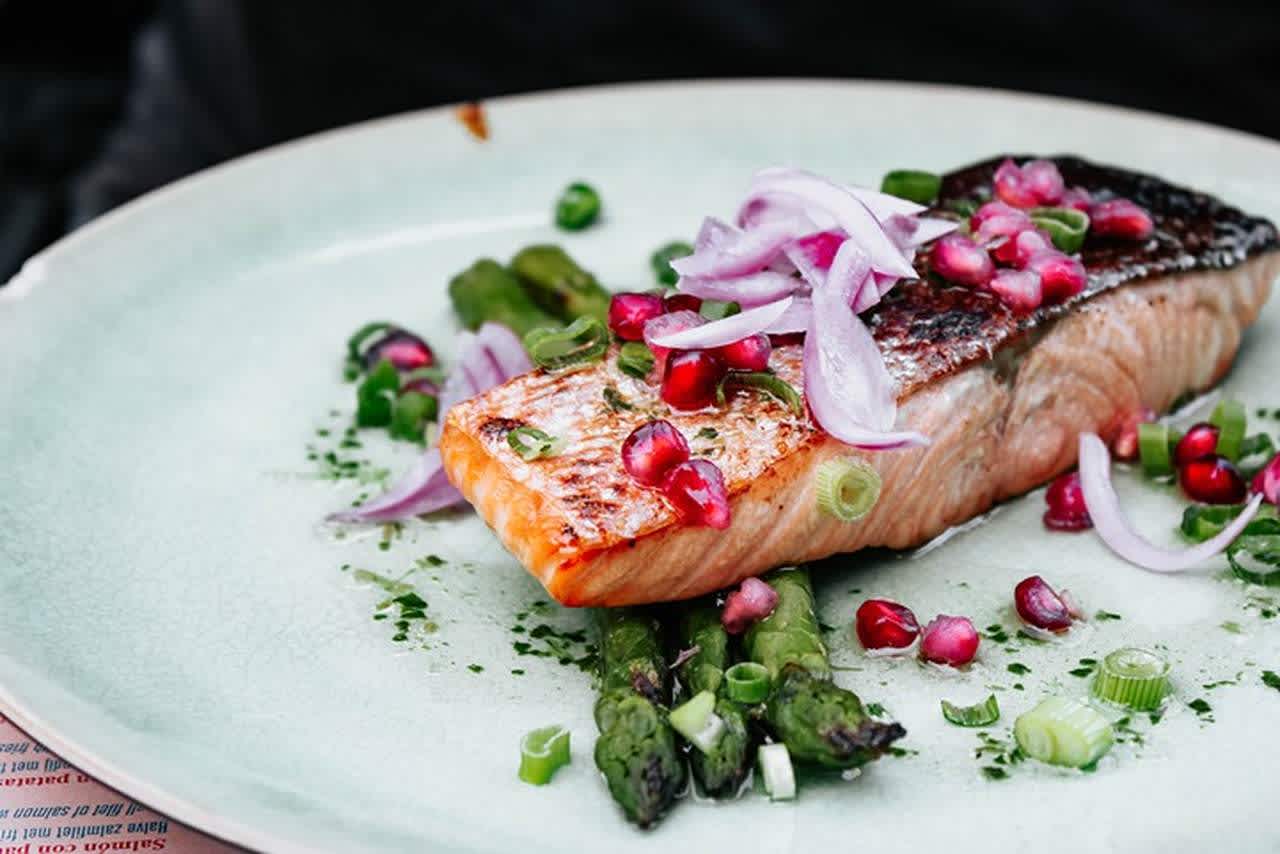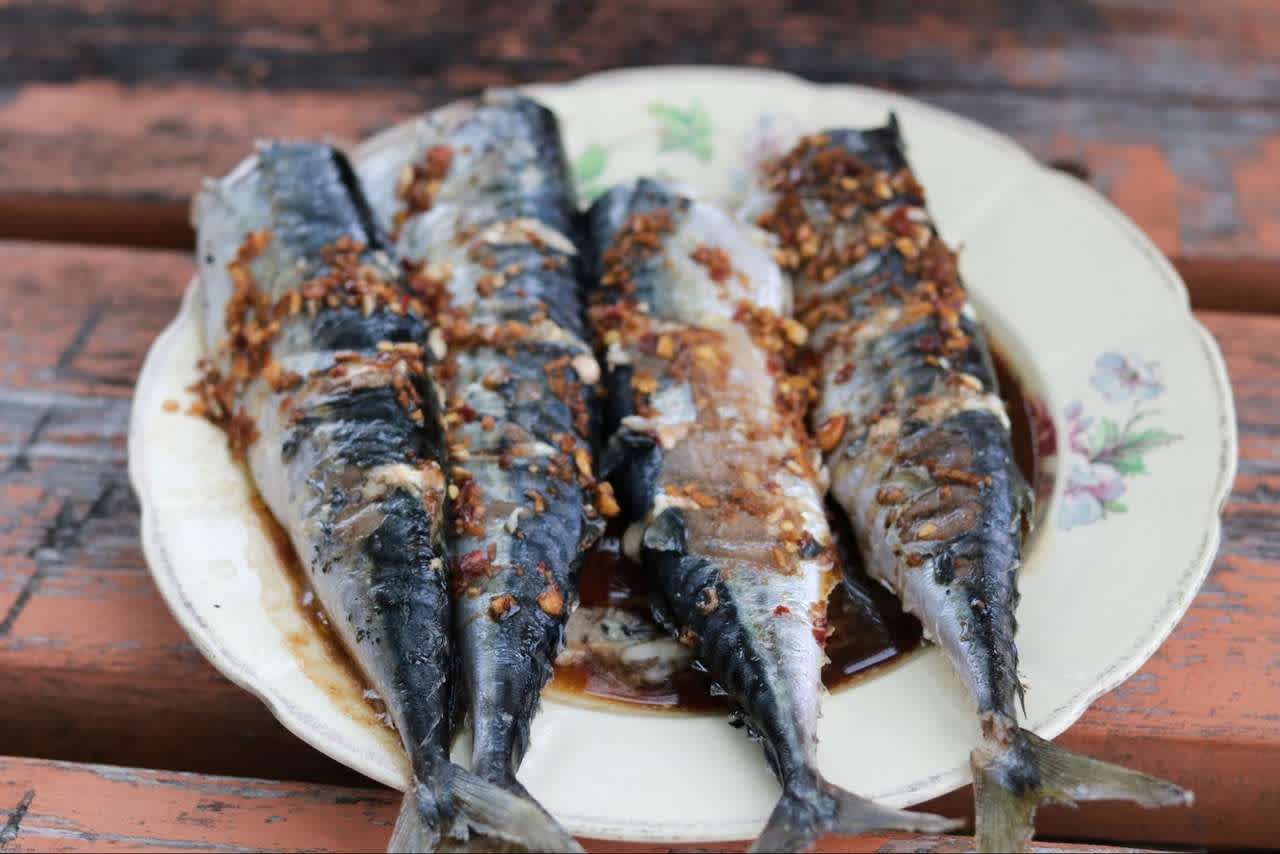What Wine Goes With Fish?
Fish choice, seasoning, and cooking method will all play a factor in how you choose a glass of wine.
One of the first pairing "rules" that wine drinkers learn is that red wine goes with red meat, and white wine goes with fish. It seems to make sense. After all, you are matching your wine choice to the color of the meat. But this "rule" ignores so many crucial aspects of wine pairing and over-simplifies. Some fish dishes need a red or rosé wine to balance intense flavors, especially if they have a rich sauce or naturally strong flavor.
Fish and red meat aren't monoliths, and there are many different types to choose from. The meat choice, seasoning, salt, sauce, and cooking method will all play a factor in how you choose a glass of wine.
Pairing advice is a dime a dozen, so we are going to examine different pairing "rules" before we give our favorite wine and fish pairings. It can feel academic until you finally open a bottle with dinner, but the best (and most fun) way to learn is by trial and error. Don't hesitate to open up the bottle you are unsure of and see how it is!
IN THIS ARTICLE:
Want personalized wines?
Get your first box of wines for $44.95 + free shipping.

Wine Pairing Basics
In a restaurant, a sommelier is in charge of pairing food with wine. They are the experts, and they know what wines go with your order. At home, it's a little more difficult. So, what makes a pairing work? There are two major philosophies to pairing:
1. Complement the food
2. Contrast the food
Knowing when to compare and when to contrast is a skill that takes a lifetime to master. It's an art unto itself.
But as you get started, think about spice and sweetness; a spicy dish can be made more flavorful by being tempered with a sweet wine. These two contrasting flavors add complexity to the dining experience. Conversely, think about a buttery Chardonnay with a rich cream sauce. The flavors complement one another and blend harmoniously.
For more on the different flavors of wine, check out our blog post common wine flavors.
Pairing Red and White Wine With Fish
Here are a few of our Firstleaf favorite pairings broken down by type of fish, method of preparation, and finishing accompaniment. This is a rough guide, so if you don't see the type of fish or wine you want to taste, follow the closest step, and don't be afraid to taste and see what you think about the pairing.
Wine with Type of Fish
We have broken down the different types of fish into three general categories. Like wine, fish have a range of tastes, so these are the broad strokes.
When in doubt, we turn to a sommelier trick and serve dinner with a sparkling wine (we especially love a crisp, high-acid Blanc de Blanc). The acidity and texture of sparkling wine pairs with most fish dishes and is our go-to choice when in doubt.
Light, Flakey Fish - (Tilapia, Sea Bass/Grouper, Flounder, Alaskan Pollock)
Light fish are often grilled or pan-seared (and occasionally fried for fish tacos). A quick squeeze of lemon often leaves these delicate fish with some zest. We like to pair these with a zippy, unoaked white wine. A wine like a Sauvignon Blanc would work well with the delicate flavor of light and flaky white fish, whereas a rich white Burgundy or oaky California Chardonnay could be unpleasant. As with other types of fish, dry Champagne will work very well, but we love Portuguese Vinho Verde, Italian Pinot Grigio, and Greek Assyrtiko too.
Heavier Textured Fish - (Salmon, Catfish, Tuna, Swordfish, Cod, Mahi Mahi, Trout)
These fish have a little more texture and flavor and can almost be steak-like, meaning they can stand up to bigger, full-bodied wines that have either spent time in oak or on the lees. Pinot Gris, Chenin Blanc, white Rioja, and oaky Chardonnay are all great choices.
Fattier freshwater fish (like trout) and salmon can also be complemented by a full-bodied white wine or a light red like Pinot Noir or a dry rosé, depending on the preparation.
Strongly Flavored Fish - (Anchovies, Sardines, Smoked Fish, Herring, Mackerel)
These strongly-flavored, oily fish have a bit more flavor to contend with. A delicate, fruit-forward or floral white wine can be overwhelmed by the strong, fishy flavors, so look for wines with a purity of flavor like Vinho Verde or a crisp sparkling wine. Or you can contrast the flavors and pull out a chilled rosé or red like Gamay or Pinot Noir.
Sauces
If you choose to add any sauce past a squeeze of citrus, it will have a very strong impact on the final dish. Richer sauces can even cover the flavor of some types of fish, so the right type of wine to pair will be one that harmonizes with the stronger flavors.
Buttery or Creamy Sauces
The classic beurre blanc, certain herb-filled butter sauces, or sauces that utilize wine and cream will enhance the mild flavor of light, flaky fish. That being said, butter and cream sauces tend to coat the palate and need a wine with bright acidity to cleanse away the strong flavor between bites. Try a sparkling wine, Assyrtiko, or a crisp Muscadet.
Spicy Sauces
Pairing with spicy foods has its own challenges and will be dependent on how spicy the sauce is and how it's applied. For instance, some curries have a sweet flavor that works with the spices and can be paired with more neutral wines, but with most spicy dishes, we prefer Riesling, Gruner Veltliner, or Gewürztraminer. With spice, you don't have to be afraid of the sweetness that is sometimes found in these wines. The sweetness helps cut some of the heat.
Umami-Rich Sauces
Tomato sauces and other umami-forward sauces also benefit from being paired with something that can stand up to the flavors of the sauce, so this is a natural match for a rosé or light red wine.
Cooking Methods
Cooking methods can impart their own flavors but vary in whether or not you should tailor your pairings to the method.
Grilling
Grilling is less important for pairing as it highlights the fish's natural flavors, especially if the char/smoke flavors are kept to a minimum.
Roasting / Braising
The pairing for this method will be dependent on the finishing. Simply roasting highlights the fish's flavor.
Fried & Raw
The answer is the same for fried and raw fish: bone-dry, high-acid sparkling wine.

Take Our Wine Quiz
Take our short wine quiz and discover award-winning wines that you'll love.
Get StartedIN THIS ARTICLE
Want personalized wines?
Get your first box of wines for $44.95 + free shipping.


WinePrint™ by Firstleaf
Are you looking to learn more about your wine preferences? Check out our Wine Print for an in-depth look at your personal tasting profile. Discover your favorite wines, varietals, regions, and tasting notes and get personalized recommendations wherever you are.
Learn More

